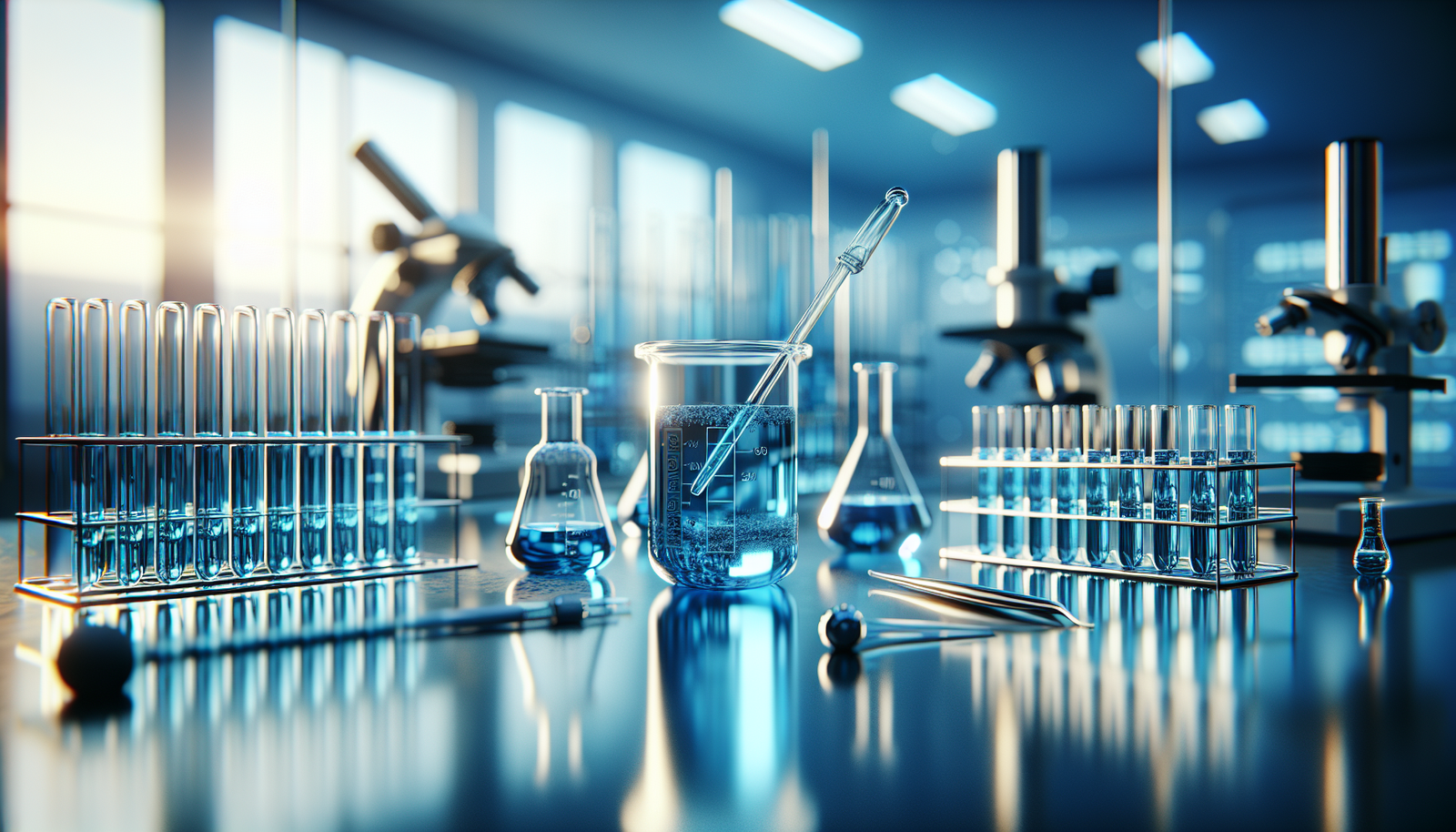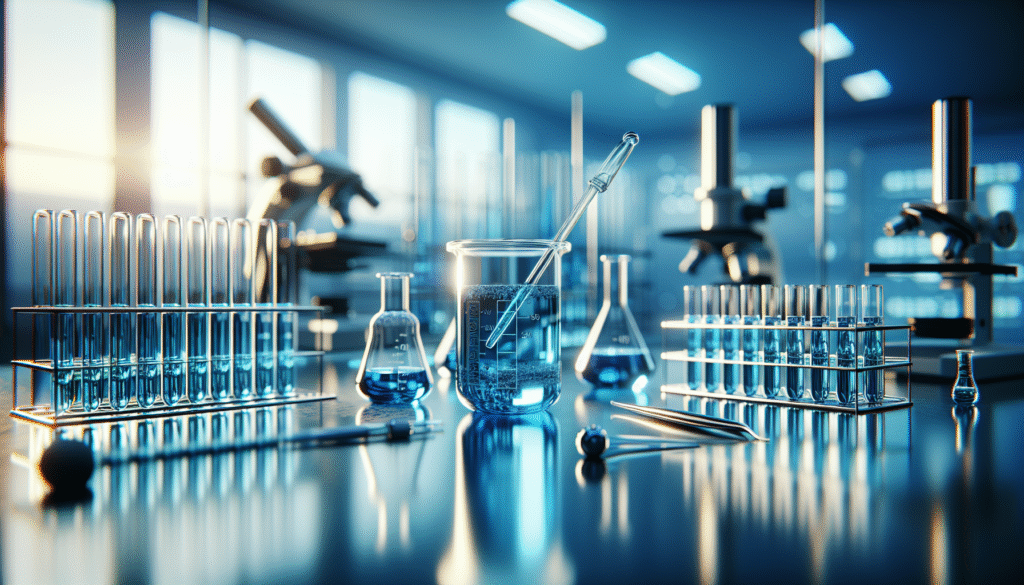
What steps should you take to prepare for experiments using Methylene Blue to ensure accuracy and safety?
When venturing into the realm of scientific experiments involving Methylene Blue, you have a responsibility to both the integrity of your research and the safety of yourself and others in the lab. This article discusses the necessary preparations, safety protocols, and considerations for effectively utilizing Methylene Blue in your experiments.

Understanding Methylene Blue
Methylene Blue, known chemically as methylene thionine chloride, is a synthetic dye that has been utilized in various applications ranging from biology to medicine. Before embarking on your experimental journey with Methylene Blue, it is crucial to understand its properties, uses, and potential risks.
Chemical Properties
Methylene Blue has the molecular formula C16H18ClN3S, representing its composition of carbon, hydrogen, chlorine, nitrogen, and sulfur. It appears as a dark blue crystalline solid, soluble in water, and exhibits unique redox properties that can affect various biological processes.
Uses in Scientific Research
Methylene Blue serves several purposes in scientific research. It acts as a staining agent for cell and tissue samples, a redox indicator in biochemical assays, and a treatment in certain medical conditions like methemoglobinemia. You must be clear about the intended use of Methylene Blue in your experiments to establish appropriate protocols.
Preparing for Experiments
Preparation is key to successfully conducting experiments with Methylene Blue. This section outlines the necessary steps to create a suitable environment for your work.
Reviewing Safety Data Sheets (SDS)
Before handling Methylene Blue, reviewing the Safety Data Sheets (SDS) is essential. The SDS provides critical information regarding the chemical properties, hazards, proper handling procedures, and emergency measures.
Key Information in the SDS:
| Section | Description |
|---|---|
| Identification | Includes names, synonyms, and uses |
| Hazard Identification | Lists potential health and environmental hazards |
| Composition | Provides details on chemical structure |
| First-aid Measures | Outlines procedures in case of exposure |
| Handling and Storage | Specifies proper methods for safe handling |
Become familiar with the information contained within the SDS to prepare yourself adequately for safe experimental practices.
Gathering Necessary Materials
Creating a comprehensive checklist of materials before you commence your experiments will aid in maintaining focus and reducing interruptions during the procedure. Here is a suggested inventory.
Essential Materials List:
| Item | Purpose |
|---|---|
| Methylene Blue | The primary reagent for your experiments |
| Distilled Water | To prepare solutions |
| Pipettes | For precise measurement and transfer |
| Beakers and Flasks | For mixing and containing solutions |
| Personal Protective Equipment (PPE) | Safety gear including gloves, goggles, and lab coats |
Collecting these materials not only streamlines your workflow but also enhances safety.
Establishing a Controlled Environment
Conducting experiments under controlled conditions minimizes external variables that can skew your results. This section provides guidelines for creating a suitable experimental environment.
Containment
Designate a laboratory space specifically for your Methylene Blue experiments. Ensure that the area is well-ventilated and equipped with appropriate containment measures, such as fume hoods, to prevent inhalation of fumes.
Cleanliness
Maintaining a clean workspace helps prevent contamination and accidents. Before commencing, thoroughly sanitize your laboratory area and ensure all materials are organized and readily accessible.
Protocol for Working with Methylene Blue
Once you have prepared the foundation for your experiments, you must establish a clear protocol for working with Methylene Blue. Following a structured approach will enhance replicability and accuracy in your research.
Preparation of Solutions
The effectiveness of your Methylene Blue experiments often hinges on the concentration of your solutions. Here are steps and guidelines for preparing Methylene Blue solutions.
Solution Concentration
Define the concentration you require for your experiments. Methylene Blue solutions are typically prepared at concentrations ranging from 0.01 mM to 0.1 mM, depending on your specific application.
Step-by-Step Preparation:
-
Calculate the Required Amount: Use the molecular weight of Methylene Blue (319.85 g/mol) to determine the mass needed for your desired volume and concentration.
[ \text = \text \times \text \times \text ]
-
Dissolve the Chemical: In a clean beaker, add the calculated mass of Methylene Blue to a specific volume of distilled water. Stir until completely dissolved, ensuring no undissolved particles remain.
-
Transfer to Storage: Once dissolved, transfer the solution into labeled storage containers, ensuring proper identification of the concentration and date prepared.
Experimental Execution
Executing experiments with Methylene Blue requires meticulous attention to detail and adherence to the established protocol.
Step-by-Step Execution:
-
Setup: Arrange your workspace with all necessary equipment and materials within arm’s reach.
-
Calibration: If utilizing analytical instruments (e.g., spectrophotometers), ensure they are calibrated before use for accurate measurements.
-
Conducting Experiments: Follow your experimental design carefully. If using Methylene Blue as a staining agent, apply it according to your established protocols, observing the necessary incubation times.
-
Data Collection: Gather all data systematically, taking detailed notes regarding observations, measurements, and any anomalies observed during the experimental process.
Post-Experiment Procedures
Upon completing your experiments, it is crucial to implement effective post-experiment procedures to ensure data accuracy and safety.
Proper Disposal
Methylene Blue is categorized as a persistent environmental pollutant; therefore, disposing of waste materials requires following appropriate protocols.
-
Waste Collection: Collect all Methylene Blue-containing waste in designated hazardous waste containers.
-
Consult Local Regulations: Review and follow local regulations or institutional guidelines related to the disposal of chemical waste.
Data Analysis
Analyzing the results of your experiments is vital for drawing meaningful conclusions. Implement proper techniques for evaluating the data collected.
-
Statistical Analysis: Utilize appropriate statistical tools to analyze your results, determining the significance of findings.
-
Documentation: Maintain thorough documentation of all findings, supporting evidence, and methodology for future reference and potential publication.
Safety Considerations
Safety is paramount when conducting experiments involving chemicals. Methylene Blue, while widely used, necessitates specific precautions to ensure safe handling.
Personal Protective Equipment (PPE)
Wearing appropriate PPE is essential for protecting yourself from exposure during experiments.
| Type of PPE | Purpose |
|---|---|
| Gloves | Prevent skin contact with Methylene Blue |
| Goggles | Protect eyes from chemical splashes |
| Lab Coat | Shield clothing from spills |
| Face Mask (if required) | Minimize inhalation of fumes |
Ensure that you are equipped with the necessary PPE before commencing any experimental procedures.
First Aid Measures
Familiarize yourself with first-aid measures specific to Methylene Blue exposure.
In Case of Accidental Exposure:
| Type of Exposure | First Aid Procedure |
|---|---|
| Skin Contact | Rinse the affected area with plenty of water and remove contaminated clothing |
| Eye Contact | Flush eyes with water for at least 15 minutes and seek medical assistance |
| Ingestion | Do not induce vomiting; seek medical attention immediately |
Knowing these procedures can be life-saving and ensure a prompt response to any accidents in the laboratory.
Handling Emergencies
Having a procedure in place for emergencies will equip you to respond quickly and effectively.
-
Emergency Contacts: Keep a list of emergency contacts accessible in your lab, including local poison control and hospital contact numbers.
-
Spill Kits: Invest in comprehensive spill kits specifically designed for chemical spills. Familiarize yourself with their contents and usage before an incident occurs.
-
Evacuation Plan: Understand and follow the laboratory’s evacuation procedures in case of a significant incident.

Legal and Ethical Considerations
Conducting experiments with Methylene Blue (or any chemical) also entails adhering to legal and ethical standards.
Regulatory Compliance
Familiarize yourself with all local, regional, and national regulations regarding the use of Methylene Blue in research. This can include restrictions, proper labeling, and reporting.
Ethical Research Practices
You have an obligation to conduct your research ethically. This includes obtaining any necessary approvals for your research, ensuring the accuracy of data reporting, and respecting the rights and welfare of any subjects involved in your studies.
Conclusion
Preparing for experiments using Methylene Blue involves several steps, including understanding the chemical’s properties, ensuring proper safety protocols, and establishing a structured experimental design. By following these guidelines, you can conduct your research with confidence while prioritizing both accuracy and safety. Preparing thoroughly empowers you to contribute valuable knowledge to the scientific community, and conducting your research ethically ensures the integrity of your work. As you advance in your scientific endeavors, keeping these principles in mind will foster a culture of safety, respect, and collaboration in the laboratory.